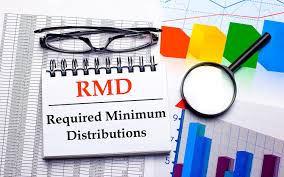If you have a traditional Individual Retirement Account (IRA) and are nearing retirement, it’s crucial to understand Required Minimum Distributions (RMDs). These are mandatory withdrawals that the Internal Revenue Service (IRS) requires you to take annually from your retirement accounts once you reach a certain age. Failing to take RMDs can lead to significant tax penalties.
1. When Do RMDs Begin?
As of 2023, due to the SECURE 2.0 Act, you must start taking RMDs from your traditional IRA when you turn 73. This means if you reached 73 in 2025, your first RMD is due by April 1, 2026. For each subsequent year, RMDs must be taken by December 31. It’s important to note that delaying your first RMD until April 1 means you’ll have to take two distributions in the same year: one for the year you turned 73 and one for the current year. This could increase your taxable income for that year.
2. Exceptions for Roth IRAs
Roth IRAs differ from traditional IRAs in that they do not require RMDs during the original owner’s lifetime. This feature makes Roth IRAs a strategic tool for estate planning, allowing your investments to grow tax-free for a longer period. However, beneficiaries who inherit Roth IRAs may be subject to RMD rules.
3. Calculating Your RMD
To determine your RMD, divide your IRA’s balance as of December 31 of the previous year by a life expectancy factor provided by the IRS. These factors are listed in the IRS’s Uniform Lifetime Table. If your spouse is your sole beneficiary and is more than ten years younger than you, a different calculation applies, using the Joint Life Expectancy Table. It’s essential to use the correct table to ensure accurate calculations.
4. Aggregating Multiple IRAs
If you own multiple traditional IRAs, you must calculate the RMD for each account separately. However, you can withdraw the total amount from one or more of your IRAs. This flexibility allows for strategic planning, such as withdrawing from underperforming investments. Keep in mind, RMDs for inherited IRAs must be calculated and withdrawn separately from your other IRAs.
5. Consequences of Missing an RMD
Failing to take your RMD by the deadline results in a hefty penalty. As of 2023, the penalty is 25% of the amount not withdrawn. If you promptly correct the mistake, the penalty may be reduced to 10%. To rectify a missed RMD, withdraw the required amount as soon as possible and consult a tax advisor about filing IRS Form 5329 to request a waiver of the penalty.
6. Tax Implications of RMDs
RMDs are considered taxable income and are subject to federal income tax. Depending on your state’s tax laws, they may also be subject to state income tax. Withdrawing RMDs can push you into a higher tax bracket, affecting your overall tax liability. It’s advisable to consult with a tax professional to understand the tax implications fully and to plan withdrawals in a tax-efficient manner.
7. Strategies for Managing RMDs
- Qualified Charitable Distributions (QCDs): If you’re charitably inclined, you can direct up to $100,000 per year from your IRA to a qualified charity. This transfer counts toward your RMD and is excluded from your taxable income, providing a tax-efficient way to fulfill charitable goals. Fidelity Investments
- Reinvesting RMDs: If you don’t need the RMD for living expenses, consider reinvesting the funds into a taxable brokerage account. This allows the money to continue growing, albeit in a taxable environment. Be mindful of the investment choices and associated risks when reinvesting.
- Coordinating with Social Security: Since RMDs increase your taxable income, they can affect the taxation of your Social Security benefits. Strategically planning the timing and amount of your RMDs can help minimize the impact on your Social Security taxation.
8. Recent Changes and Future Updates
The SECURE 2.0 Act has brought significant changes to RMD rules, including increasing the starting age to 73 in 2023 and further to 75 by 2033. Staying informed about legislative changes is crucial, as they can impact your retirement planning strategies. Regularly consult the IRS website or a financial advisor to keep abreast of any updates.
9. Importance of Professional Guidance
Navigating RMD rules can be complex, and mistakes can be costly. Engaging with a financial advisor or tax professional can provide personalized advice tailored to your financial situation, ensuring compliance with IRS regulations and optimizing your retirement income strategy.
Understanding and managing RMDs is a critical aspect of retirement planning. By familiarizing yourself with the rules and implementing strategic approaches, you can minimize tax liabilities and make the most of your retirement savings.
Disclaimer – Our editorial team has thoroughly fact-checked this article to ensure its accuracy and eliminate any potential misinformation. We are dedicated to upholding the highest standards of integrity in our content.





More Stories
Avoid Costly Mistakes: Essential Tips for IRA Required Minimum Distribution
Avoid Costly Mistakes: Essential Tips for IRA Required Minimum Distribution
Avoid Costly Mistakes: Essential Tips for IRA Required Minimum Distribution